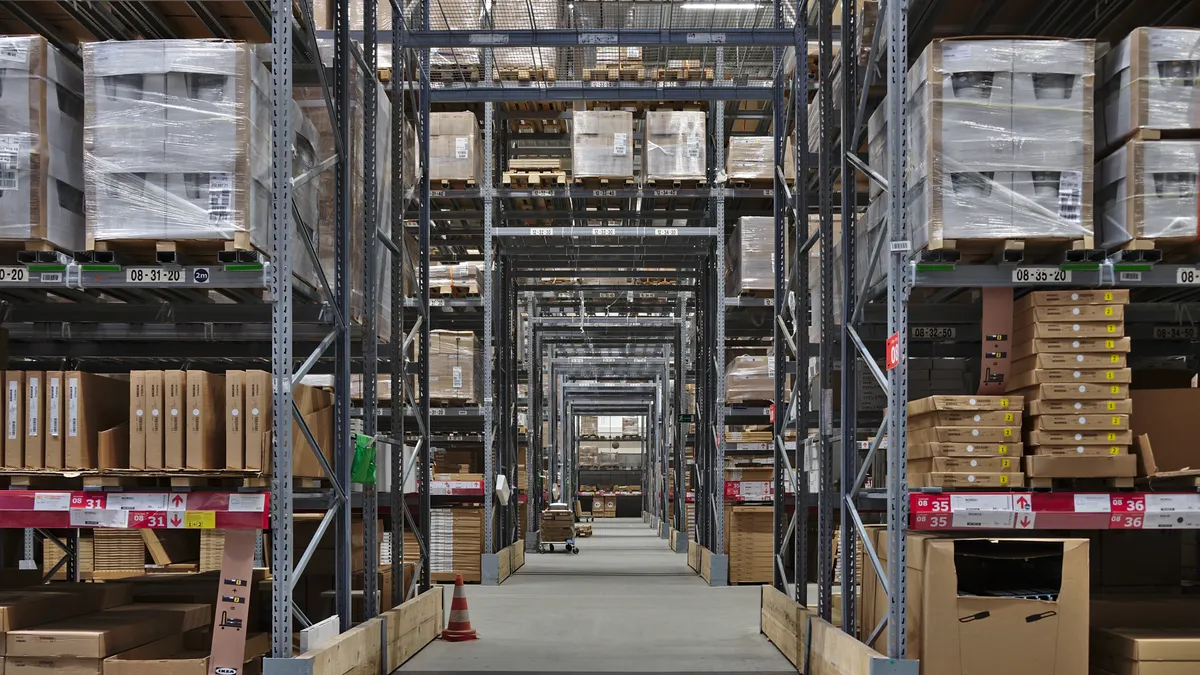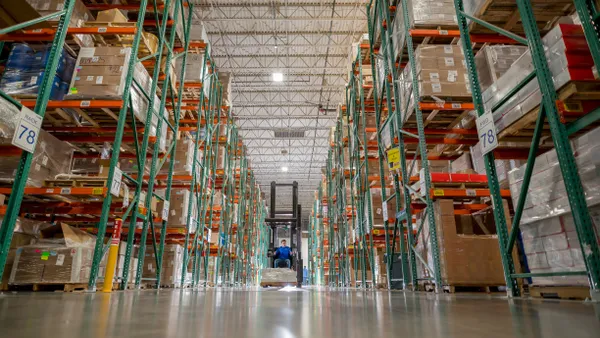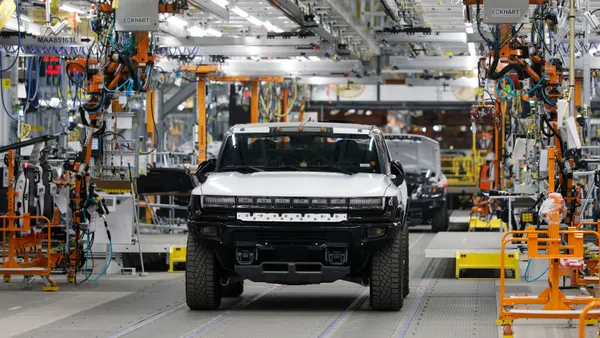Dive Brief:
- Forty percent of supply chain professionals say their organizations are currently using inventory and network optimization tools in their operations and 34% expect to be doing so within the next two years, according to the latest annual MHI Industry Report which surveyed 1,001 supply chain professionals in manufacturing, transportation and other industries.
- More than half (54%) of respondents said they think inventory management technology has the potential to disrupt the industry or provide a competitive advantage to the user.
- These tools make reskilling the existing workforce a possibility. "If employees from non-technical roles have deep knowledge in business functions such as inventory management or distribution center operations, then transitioning to a technical role supporting inventory & network optimization might be a perfect fit," the report reads.

Dive Insight:
Companies are focused on tools that provide insight into inventory as omnichannel operations make it especially important — and more complicated — to keep track of multiple sales channels. This is why 53% of retailers last year said they planned to invest in an order management system, according to a survey by Forrester.
Inventory and network optimization is about inventory location. It is also about understanding when inventory needs to be replenished and setting up metrics — fill rate, ready rate, backorder ratio, etc. — that help a demand-driven supply chain to understand where product is needed, according to Robert A. Davis' writing in the book "Demand-Driven Inventory Optimization and Replenishment: Creating a More Efficient Supply Chain."
Inputs like fixed cost, lead time and demand variance can be used to create replenishment policies. The policies are simple algorithms that "allow for individualized policies, whereas the ERP system will run on the rule-of-thumb days or weeks of supply." Each node and product combination within a supply chain can have different replenishment plans based on its demand and the costs associated with restocking, according to Davis who worked as a principal product manager in the supply chain management solutions group at SAS Institute.
In a multi-level supply chain, a solid understanding of inventory and network optimization can prevent demand variances from being amplified throughout the supply chain as seen in the bullwhip effect. A warehouse's fill rate does not need to match a retailer's required service level in order to meet that location's needs, according to Davis.
The right policies can create greater optimization within an inventory management process, but this is difficult to accomplish without the right technology. An OMS can provide insight into inventories, shipping cost and the labor available at each node. But there are also the hardware considerations. RFID and Internet of Things (IoT) technologies have been heralded as tools for improving inventory tracking.
The MHI report highlights an example of an unnamed company that switches from manually counting inventory to using wearable barcode scanners and other IoT technology to track inventory within the warehouse.
"The scanner data is captured in real time through 5G cellular technology and stored in databases that provide the foundation for advanced analytics and business intelligence," the report reads, adding that the change resulted in fewer inventory and fulfillment errors.
Lululemon has even credited its investment in RFID for helping it to weather the demand slump created by the coronavirus.
There are some concerns about RFID accuracy and the fact that "realized read-rates fall short of expectations," according to a paper published last year in the Journal of Business Logistics by researchers at three U.S. universities and the Cancer Treatment Centers of America Global. Many who tout the benefits of RFID might assume a successful read rate of 100%, but research found the angle of the antenna used to communicate with the RFID tags can make a substantial difference in read rates.
The study suggests some of this could be the result of the tags used. "Field performance varies across tags; some appear to achieve read-rates close to 100% irrespective of field conditions, while others do not," the researchers concluded.
Using the right technology when working to optimize inventory and networks is important, but having high-level metrics and KPIs in place can help a supply chain ensure the accurate amount of inventory, in the right location.
This story was first published in our weekly newsletter, Supply Chain Dive: Operations. Sign up here.















